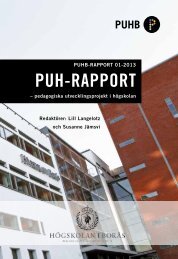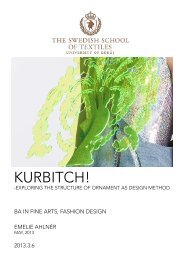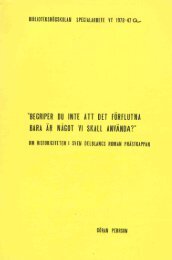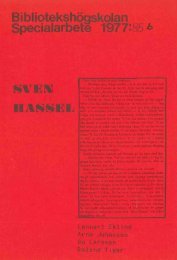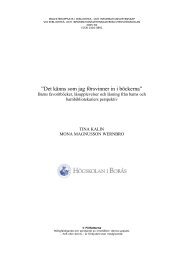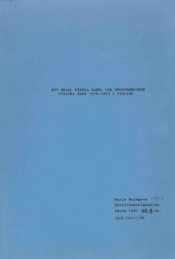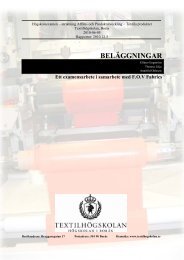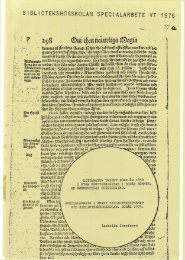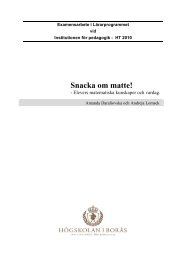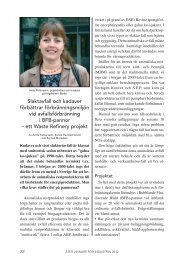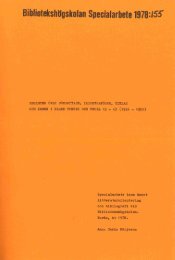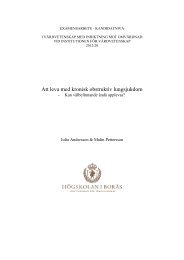barbara jansen - BADA
barbara jansen - BADA
barbara jansen - BADA
You also want an ePaper? Increase the reach of your titles
YUMPU automatically turns print PDFs into web optimized ePapers that Google loves.
prelude<br />
LBM and Brochier Technologies, have launched first woven light fabrics incorporating<br />
optical fibres (Hietanen, N.D., Nordfeldt Iversen, N.D., Nordfeldt<br />
Iversen, 2006, Taylor, 2010, Krogh, N.D., Luminex, N.D., LBM, N.D., Brochier<br />
Technologies, N.D., Ligorano, N.D., Fiber Optic Tapestry [video], 2010,<br />
Taylor, 2011, Hemmings, 2012, p.6, 8, 40-45).<br />
Especially in recent works, Sarah Taylor, Astrid Krogh, and Ligorano/<br />
Reese explore similar materials (particularly Taylor and Krogh, who use<br />
PMMA optical fibres in combination with paper yarns/materials) and expressions,<br />
in the form of dynamic colour-changes displayed in hand woven structures,<br />
to those investigated in this thesis. Their works feature as art pieces<br />
and site- specific installations. Unfortunately, almost no informations has<br />
been published about these works that discuss their inspiration, design process<br />
and technical realization of the colour-changing sequences, or the textile<br />
structures themselves. Their works present themselves as pure inspiration for<br />
their audience and aim open up the perception towards new textile expressions.<br />
However, the research work presented in this thesis aims to provide<br />
other designers with the necessary insights in order to be able to create their<br />
own time-based works, especially in the area of light-emitting textiles.<br />
The light-emitting material used in this project is PMMA (PolyMethylMeta-<br />
Acrylate) optical fibres. This type of fibres have been integrated into both industrially<br />
woven and hand braided structures, and emit light through the use<br />
of white and RGB-LEDs (light-emitting diodes, each LED incorporates one<br />
red, green and blue LED) which are controlled by microcontroller digital interfaces.<br />
There are three main reasons why I continue to use optical fibres<br />
as light-emitting materials in my work. The first two concern the structural<br />
integration of the light-emitting material (optical fibres) into textiles, and the<br />
last concerns the light quality as such.<br />
Textile + Light = one: from a design perspective, PMMA optical fibres are<br />
interesting to use as a light-emitting material in a textile context, as they are<br />
in their appearance quite close to a transparent thread. Using a “light thread”<br />
offers an opportunity to make light become a textile piece in itself. In this way<br />
light and textile structure melt into each other and become indivisible.<br />
Light expression – even light-emitting surface: especially the integration<br />
of optical fibres into woven structures allows for creation of dense surfaces<br />
that spreads light evenly. Optical fibres were the first light-emitting materials<br />
that crossed my path and I have explored different structural forms of integration<br />
of the fibres. The intuitive creation of an even light-emitting surface<br />
12



